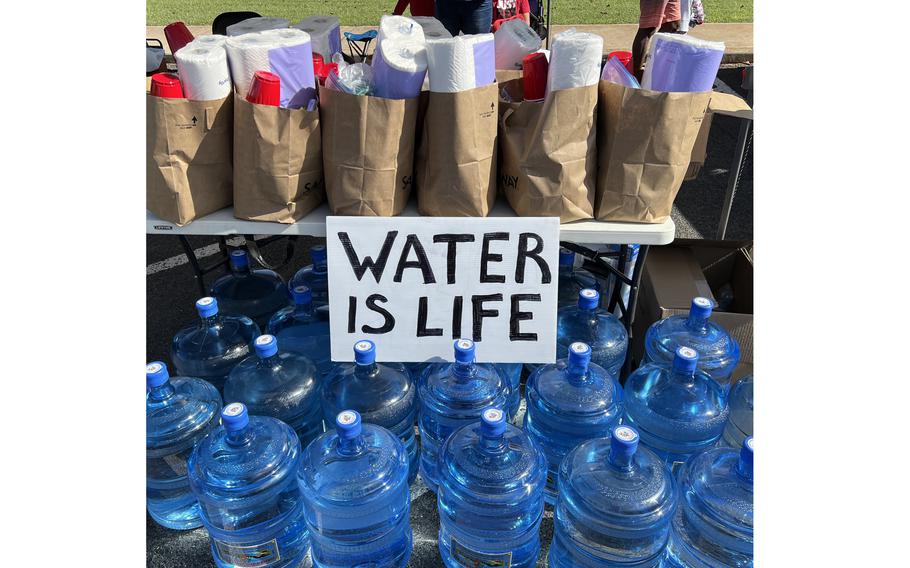
The mutual aid effort began nearly a year ago when community members rallied together to deliver water, toys and other goods to Kapilina residents affected by the Red Hill crisis. (Shut Down Red Hill Mutual Aid/Twitter)
(Tribune News Service) — Community members and activists with Shut Down Red Hill Mutual Aid gave out clean water to residents at the entrance to Kapilina Beach Homes on Saturday.
For nearly a year, they have been gathering on weekends to hand out water at communities affected by contamination of the Navy’s water system a year ago by fuel from its underground Red Hill storage tanks.
The Navy has since acknowledged the homes in Kapilina are on its water system, which serves approximately 93,000 people. In March, Defense Secretary Lloyd Austin ordered the permanent defueling and shutdown of the Red Hill storage tanks, which sit just 100 feet above a critical aquifer that most of Honolulu relies on for its drinking water. The military currently hopes to complete the process by summer 2024.
“Red Hill is an existential crisis, it’s one of the biggest threats that we face,“ said Hanaloa Helela, a Native Hawaiian activist and one of the aid organizers who was handing out water and directing volunteers Saturday. “With 104 million gallons still in the tanks, it’s pretty serious.”
“At first the Navy tried to act like because they were civilians, they weren’t their kuleana,“ Helela said.
“I don’t even cook with it or drink it now,“ said Jennifer Boven, 33, a five-year resident of Kapilina. “I have an anxiety around it because it’s like, how do you trust that now?”
“The doctor kept saying, ‘Oh, just give her more baths, ‘ and it wasn’t going away,“ she said. “I saw some other lady had the same thing with her kids and I was like, ‘Oh my God, that’s what it was, it was the water.’ ”
“Most of the people here have big families,“ Bonilla said. “At first, it started off with one case of water per household. And then it went up to two and that was maxed out, and to us it’s not enough. Not only do we need water to drink but we also needed it to shower because there was no way we were gonna touch that water.”
“My son almost died from taking a shower,“ Bonilla said. “It’s hard to talk about it still to this day.”
“Even the first day that I got here it was like PTSD,“ he said. “Like I started checking the water, I had to check the coffee.”
Kapilina resident China Cunningham recently moved to the community from the Army’s Red Hill housing area. She began experiencing digestive tract problems after the contamination a year ago. Her mother, who was visiting for the holidays, also got sick from the water. She said no one told her before she moved that Kapilina is also connected to the Navy’s water system.
“When this first occurred, I felt like I have really had to go to Google to understand the severity of the situation,“ she said. “I’m not trying to sue anybody, I just want to know : For the sake of my health and my family’s health, what can I expect ? That’s all I want to know.”
(c)2022 The Honolulu Star-Advertiser
Visit The Honolulu Star-Advertiser at www.staradvertiser.com
Distributed by Tribune Content Agency, LLC.